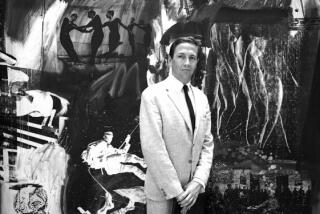Review: A secret life pulled into focus in ‘Finding Vivian Maier’
Forget the tree that fell in the forest with no one around to hear it. What if someone took more than 100,000 photographs over decades of shooting and absolutely no one was around to see them? And what if they turned out to be really, really good?
That in a nutshell is the stranger-than-fiction tale behind the gripping documentary “Finding Vivian Maier,” a film that asks a pair of equally involving questions: Exactly who was this hidden master and how did her work and her life finally come to light?
If you have an interest in 20th century American photography, you likely know something of Maier, whose story became a media sensation in 2009 when a Chicago man named John Maloof posted a few hundred of Maier’s images on Flickr and asked “What do I do with this stuff?”
BEST MOVIES OF 2013: Turan | Sharkey | Olsen
The response was thunderous, with people comparing Maier’s work to Robert Frank, Helen Levitt, Diane Arbus and other greats of midcentury street photography. The combination of the high quality of the images and the deceased Maier’s personal story — she had worked as a nanny and caregiver and had kept her artwork to herself — proved irresistible and gave her the instant fame she had not seemed to want in her lifetime.
“Finding Vivian Maier” is co-directed by Maloof and Charlie Siskel (film critic Gene Siskel’s nephew), giving it a straight-from-the-horse’s-mouth quality that is one of its strengths.
For it turned out that if there was something obsessive about Maier, she was matched stride for stride by her equally possessed discoverer, who appears on camera to tell his part of the story.
Though the photographer and the archivist never met, they seem like soul mates, equally determined to take things to the limit, which in Maloof’s case meant tracking down everything knowable about a woman who preferred to live her life in the shadows.
It started in 2007, when for $380 Maloof acquired at auction one of three trunks that contained many of Maier’s negatives. A second-generation flea market entrepreneur, he has, he says, a kind of sixth sense about what’s worth purchasing.
PHOTOS: Box office top 10 of 2013
Warming to the task, Maloof tracked down and bought Maier’s other two trunks, and he got hold of the rest of her possessions as well, which were considerable. For in addition to everything else this woman turned out to be a world-class hoarder who did not believe in throwing anything away.
Not content to stop with objects, Maloof tracked down people who knew Maier, many of whom appear in the documentary. They include the children (now adults) she was a nanny for, the people who hired her (including TV host Phil Donahue), even the proprietor of a Chicago antiques shop where Maier was a regular customer and “a real pain in the ass.”
Maloof traces Maier’s family to the small village in the French Alps where her mother came from, and he speaks to distant cousins who remember Vivian visiting decades earlier. No stone is too distant or too small to remain unturned.
What we find out about Maier, revealed in self-portraits as a striking woman with a singular sense of self, is fascinating.
PHOTOS: Biggest Box Office Flops of 2013
Some of the children under her care recall her as not especially nice, but all remember her as never without the square Rolleiflex camera around her neck, a camera whose through-the-top viewfinder was perfect for clandestine shooting. She was a big fan of day trips with the kids — the better to have opportunities to shoot — and she likely became a nanny because of the free time it afforded her.
Yet one of the intriguing things about the Vivian Maier this film presents is that, like many artists, she remains finally elusive, someone who was literally all about the work. We don’t know a thing about what drove her or even whether she wanted her images to be seen. When one of the film’s witnesses says, “She lived the life she wanted, a life without compromise,” that seems as close to the truth as we are going to get.
More to Read
Only good movies
Get the Indie Focus newsletter, Mark Olsen's weekly guide to the world of cinema.
You may occasionally receive promotional content from the Los Angeles Times.











